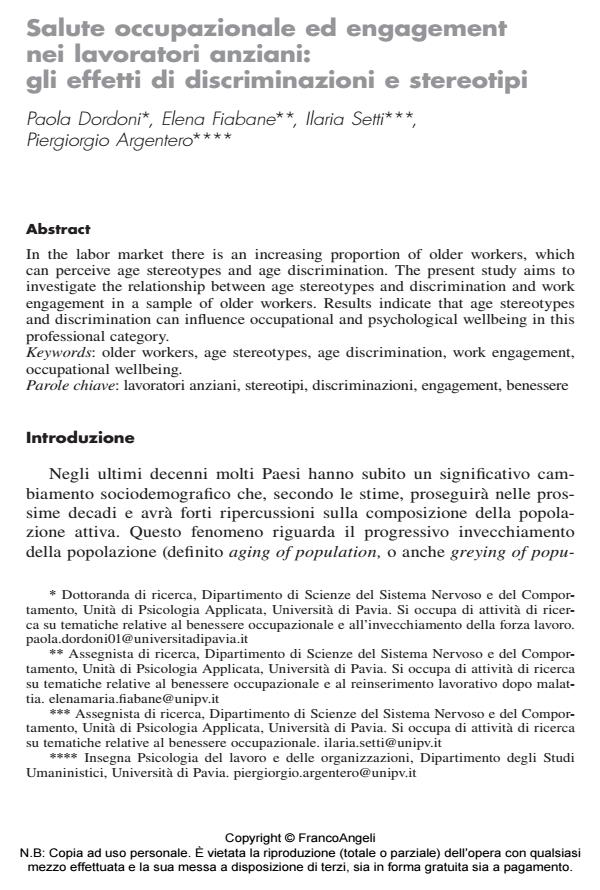Salute occupazionale ed engagement nei lavoratori anziani: gli effetti di discriminazioni e stereotipi
Titolo Rivista SICUREZZA E SCIENZE SOCIALI
Autori/Curatori Paola Dordoni, Elena Fiabane, Ilaria Setti, Piergiorgio Argentero
Anno di pubblicazione 2015 Fascicolo 2015/1
Lingua Italiano Numero pagine 17 P. 33-49 Dimensione file 126 KB
DOI 10.3280/SISS2015-001004
Il DOI è il codice a barre della proprietà intellettuale: per saperne di più
clicca qui
Qui sotto puoi vedere in anteprima la prima pagina di questo articolo.
Se questo articolo ti interessa, lo puoi acquistare (e scaricare in formato pdf) seguendo le facili indicazioni per acquistare il download credit. Acquista Download Credits per scaricare questo Articolo in formato PDF

FrancoAngeli è membro della Publishers International Linking Association, Inc (PILA)associazione indipendente e non profit per facilitare (attraverso i servizi tecnologici implementati da CrossRef.org) l’accesso degli studiosi ai contenuti digitali nelle pubblicazioni professionali e scientifiche
In the labor market there is an increasing proportion of older workers, which can perceive age stereotypes and age discrimination. The present study aims to investigate the relationship between age stereotypes and discrimination and work engagement in a sample of older workers. Results indicate that age stereotypes and discrimination can influence occupational and psychological wellbeing in this professional category.
Parole chiave:Lavoratori anziani, stereotipi, discriminazioni, engagement, benessere
Paola Dordoni, Elena Fiabane, Ilaria Setti, Piergiorgio Argentero, Salute occupazionale ed engagement nei lavoratori anziani: gli effetti di discriminazioni e stereotipi in "SICUREZZA E SCIENZE SOCIALI" 1/2015, pp 33-49, DOI: 10.3280/SISS2015-001004